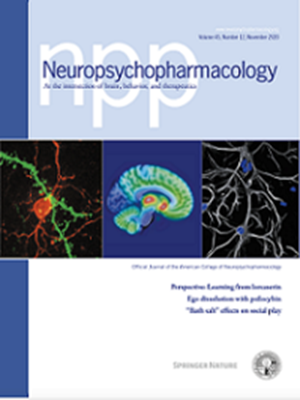Polygenic overlap with granulocyte counts identifies novel loci for clozapine metabolism and clozapine-induced agranulocytosis
IF 6.6
1区 医学
Q1 NEUROSCIENCES
引用次数: 0
Abstract
While clozapine is the most effective antipsychotic drug, its use is limited due to hematological adverse effects involving the reduction of granulocyte counts with potential life-threatening agranulocytosis. It is not yet possible to predict or prevent the risk of agranulocytosis, and the mechanisms are unknown but likely related to clozapine metabolism. Genome-wide association studies (GWASs) of clozapine metabolism and clozapine-induced agranulocytosis have identified few genetic loci. We used the largest available GWAS summary statistics of clozapine metabolism (clozapine-to-norclozapine ratio) and clozapine-induced agranulocytosis, applying the conditional false discovery rate (condFDR) method to increase power for genetic discovery by conditioning on granulocyte counts variants. To investigate potential causal effects of shared loci, we performed Mendelian Randomization analyses. After conditioning on granulocyte counts, we identified two novel loci associated with clozapine-to-norclozapine ratio. These loci were significantly associated with clozapine metabolism in a validation sample of 392 clozapine-treated individuals. For clozapine-induced agranulocytosis, five loci were identified after conditioning on granulocyte counts. These five loci were significantly associated with reduced granulocyte counts in a small independent sample of clozapine-treated individuals. Genetic liability to slow clozapine metabolism (high clozapine-to-norclozapine ratio) showed evidence of a causal effect on reduced neutrophil counts, and genetic liability to low neutrophil counts exhibited weak evidence of a causal effect on clozapine-induced agranulocytosis. Our findings of shared genetic variants associated with clozapine metabolism and granulocyte counts may form the basis for developing prediction models for clozapine-induced agranulocytosis.

与粒细胞计数的多基因重叠确定了氯氮平代谢和氯氮平诱导的粒细胞缺乏症的新位点。
虽然氯氮平是最有效的抗精神病药物,但由于血液系统的不良反应,包括粒细胞计数减少和潜在的危及生命的粒细胞缺乏症,氯氮平的使用受到限制。目前尚不可能预测或预防粒细胞缺乏症的风险,其机制尚不清楚,但可能与氯氮平代谢有关。氯氮平代谢和氯氮平诱导的粒细胞缺乏症的全基因组关联研究(GWASs)已经确定了少数遗传位点。我们使用了最大的GWAS氯氮平代谢(氯氮平与去氯氮平的比值)和氯氮平诱导的粒细胞缺血症的汇总统计数据,应用条件错误发现率(condFDR)方法,通过调节粒细胞计数变异来增加基因发现的能力。为了研究共享基因座的潜在因果效应,我们进行了孟德尔随机化分析。在对粒细胞计数进行调节后,我们确定了两个与氯氮平与去氯氮平比率相关的新位点。在392个氯氮平治疗个体的验证样本中,这些基因座与氯氮平代谢显著相关。对于氯氮平诱导的粒细胞缺乏症,在对粒细胞计数进行调节后鉴定出5个位点。在氯氮平治疗个体的一小部分独立样本中,这五个基因座与粒细胞计数减少显著相关。氯氮平代谢缓慢的遗传倾向(氯氮平与去氯氮平的高比值)显示了中性粒细胞计数减少的因果关系,而中性粒细胞计数低的遗传倾向显示了氯氮平诱导的粒细胞缺乏症因果关系的弱证据。我们发现与氯氮平代谢和粒细胞计数相关的共同遗传变异可能形成氯氮平诱导的粒细胞缺乏症预测模型的基础。
本文章由计算机程序翻译,如有差异,请以英文原文为准。
求助全文
约1分钟内获得全文
求助全文
来源期刊

Neuropsychopharmacology
医学-精神病学
CiteScore
15.00
自引率
2.60%
发文量
240
审稿时长
2 months
期刊介绍:
Neuropsychopharmacology is a reputable international scientific journal that serves as the official publication of the American College of Neuropsychopharmacology (ACNP). The journal's primary focus is on research that enhances our knowledge of the brain and behavior, with a particular emphasis on the molecular, cellular, physiological, and psychological aspects of substances that affect the central nervous system (CNS). It also aims to identify new molecular targets for the development of future drugs.
The journal prioritizes original research reports, but it also welcomes mini-reviews and perspectives, which are often solicited by the editorial office. These types of articles provide valuable insights and syntheses of current research trends and future directions in the field of neuroscience and pharmacology.
 求助内容:
求助内容: 应助结果提醒方式:
应助结果提醒方式:


